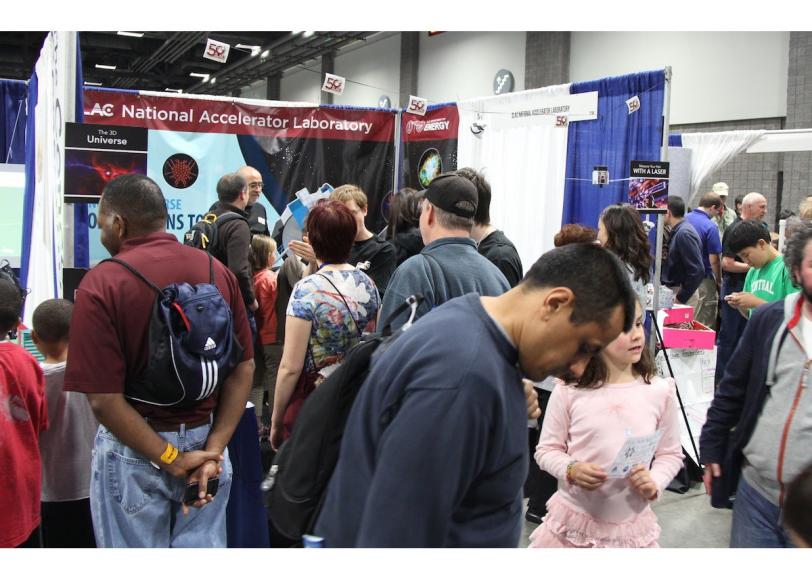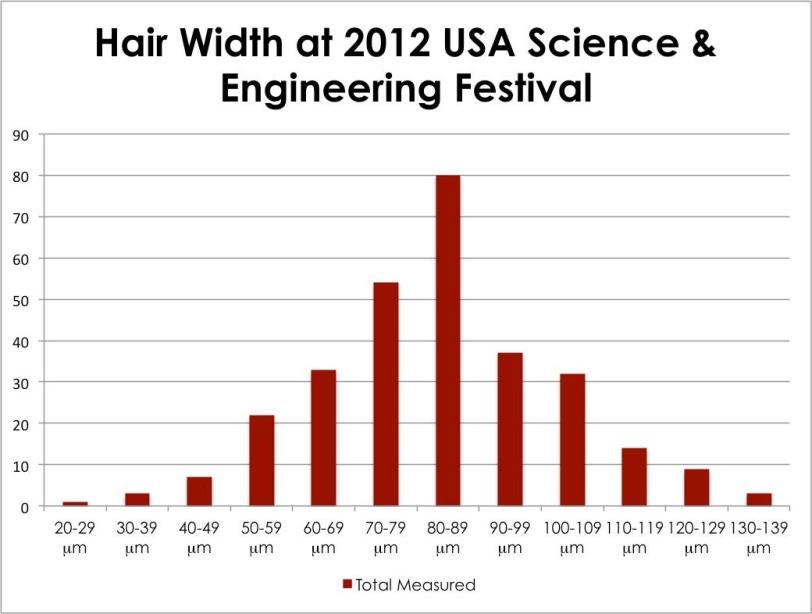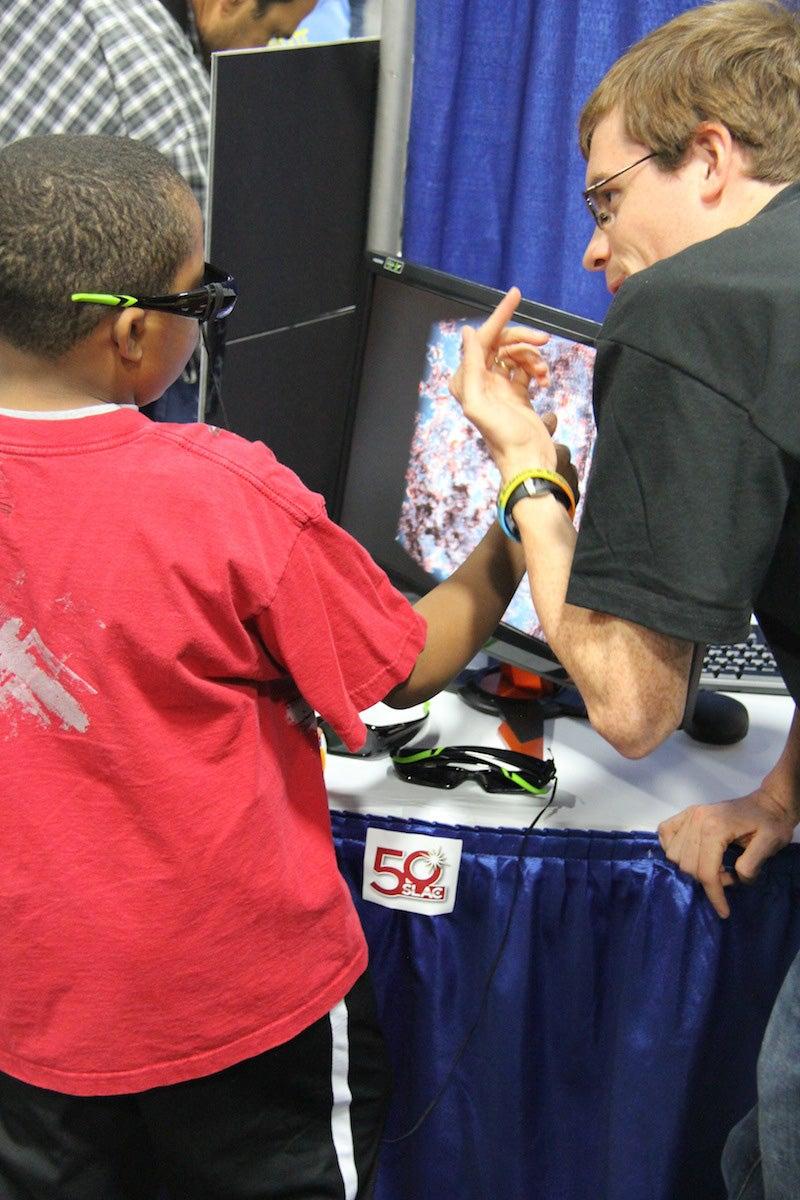SLAC Engages Youth, Families at 2012 USA Science & Engineering Festival
With more than 150,000 participants, the second annual USA Science & Engineering Festival in Washington, D.C., may have been the largest celebration of Science, Technology, Engineering and Mathematics (STEM) careers in our nation’s history
By Andy Freeberg
With more than 150,000 participants, the second annual USA Science & Engineering Festival in Washington, D.C., may have been the largest celebration of Science, Technology, Engineering and Mathematics (STEM) careers in our nation’s history. SLAC was among hundreds of exhibitors from government, academia and private industry that engaged with huge masses of people, from April 27 to 29, in hopes of inspiring youth to explore a career in STEM.
For this second annual festival, the event moved from its previous location on the National Mall into the Washington Convention Center and doubled the number of exhibitors. Top attractions included science celebrities such as Bill Nye and the stars of MythBusters, demonstrations of robotics and space technology, as well as science-book signings, several entertainment stages and more interactive displays than any one person could possibly fit into the festival's three days.
SLAC’s booth, run by six SLAC ambassadors, invited visitors to learn about the lab by doing laser-diffraction measurements of their hair, viewing and discussing 3-D astrophysics visualizations by KIPAC and taking a Fermi Gamma-ray Space Telescope model to build at home. (Some SLAC employees may remember these activities from the recent "Kids Night" event.)
Settled in among booths from other national labs, such as Princeton Plasma Physics Laboratory, Idaho National Lab and Lawrence Berkeley National Lab, SLAC's booth was packed with visitors for almost the entire 20 hours that the expo floor was open.
“We had great feedback from those who passed through,” said SLAC Community Relations Manager Melinda Lee. “People commented that it was the first place where they actually learned something, that it was the best booth they'd seen that day.
"The head of the physics department at St. Mary's College even praised our demonstration and its tie to wider applications," Lee added. "He came back with his kids to make sure they saw it!”
The chance to measure the width of their hair with a laser proved to be the biggest hit at SLAC's booth, and several hundred students, families and science enthusiasts took part. The simple diffraction experiment proved an effective way to offer a focused lesson about measurement and instrumentation, with an easy transition to the types of important experiments that take place at SLAC’s light source facilities. There, scientists use the diffraction of X-ray light to examine everything from biological molecules to samples of exotic materials.
The team saved 300 of the hair measurements taken over the course of the event and found that widths ranged from 27 to 139 microns. The average hair width was 83 microns. Lighter hair was generally thinner than darker hair, but there were many exceptions. Because the festival was a family event, the experiment also became a genetics lesson, with many children finding they had “Mom’s hair” or “Dad’s hair.”
While the experiment was a simple one, those who took part were eager to learn how laser diffraction worked, as well as hear how it related to the research done at SLAC. It appealed to young and old alike, and each participant took home a card with their hair and its measurement calculations, hard proof of their follicle scale to show friends and barbers.
“The efforts of the team were certainly worthwhile,” Lee said. “To see how happy, engaged and interested people were in what we were showing was uplifting and gratifying to see.”

(Photo by Andy Freeberg)

